

Damion Smy
GWM Cannon Alpha ute, Tank 300 HEV and Tank 500 recalled
19 Hours Ago
There's a lot to like about the Toyota C-HR. But does this sporty looking SUV offer the thrills its design promises at entry level?
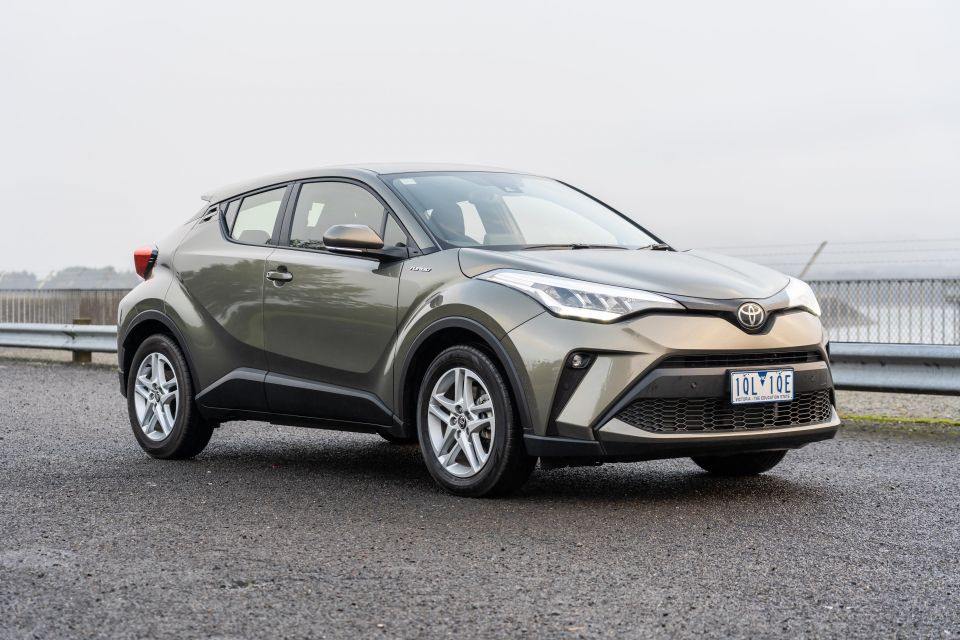
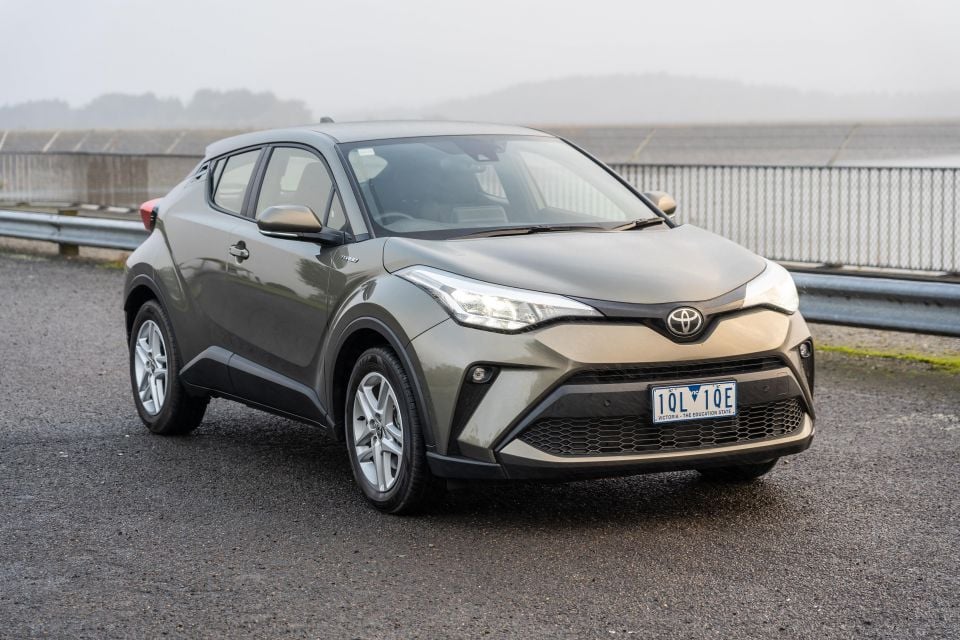

Founder
New from
$29,540
excl. on-roads

Founder
New from
$29,540
excl. on-roads


Founder
New from
$29,540
excl. on-roads

Founder
New from
$29,540
excl. on-roads
Quickly see how this car stacks up against its competition. Select any benchmark to see more details.
Where expert car reviews meet expert car buying – CarExpert gives you trusted advice, personalised service and real savings on your next new car.
The Toyota C-HR sparked a design renaissance for Toyota when it burst on to the scene three years ago. Today it’s backed by an almost fully-refreshed line-up that moves the brand away from the Plain Jane image it once held.
While the name is a bit of a stretch – C-HR stands for Coupe High Rider, of which it’s neither – the car itself presents a compelling option for buyers who want a taller vehicle with the swollen proportions of a medium-sized SUV.
There’s a mix of front- and all-wheel drive options, along with a hybrid for fuel-conscious buyers.
At the very bottom of the range, the Toyota C-HR two-wheel drive is pretty stripped back. Is it still worth adding to your consideration list?
The entire C-HR range is automatic-only, with the range kicking off from $30,290 before on-road costs for the entry-level two-wheel-drive model on test here.
It stretches all the way up to the Koba hybrid, which is priced from $37,190 before on-roads.
In between the bottom and top specifications you’ll find both front- and all-wheel drive variants. You can read more about the range in our Toyota C-HR pricing and specifications article.

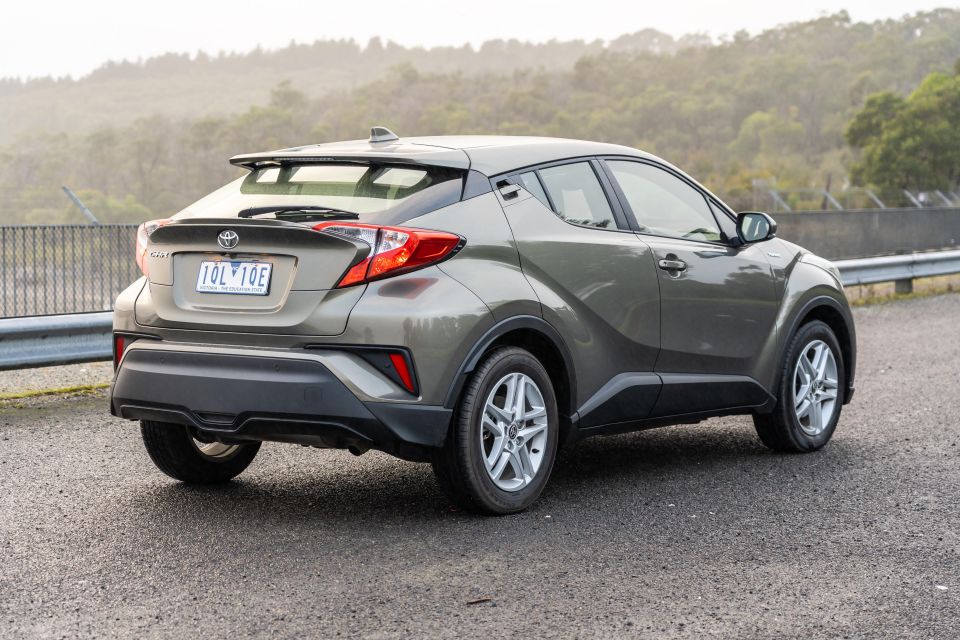
There are nine colours to choose from with all but a solid yellow colour called Hornet Yellow attracting a $500 premium.
Buy your new car without the stress. It's fast, simple and completely free.

Great service from Travis and team, second time I have used this business would not hesitate to recommend them to anyone
Craig C.
Purchased a Ford Ranger in Sunshine Coast, QLD
CarExpert helped Craig save thousands on his Ford Ranger, now let us save you on your next new car.
Find a dealThe entry level C-HR lines up against the roomier Kia Seltos Sport, nicely-trimmed Mazda CX-30 G20 Evolve, and boldly designed Hyundai Kona Elite.
At the bottom of the C-HR range you’re met with only a basic set of standard features.
On the outside are 17-inch alloy wheels, LED headlights with daytime running lights, front and rear parking sensors, a reverse-view camera and fog lights.
Inside the cabin, there are fabric seats, a regular key without proximity sensing for entry or start, dual-zone automatic climate control, automatic headlights and windscreen wipers, AM/FM/DAB+ radio, wired Apple CarPlay and Android Auto, an electric park brake, radar cruise control, and voice recognition for the infotainment system.
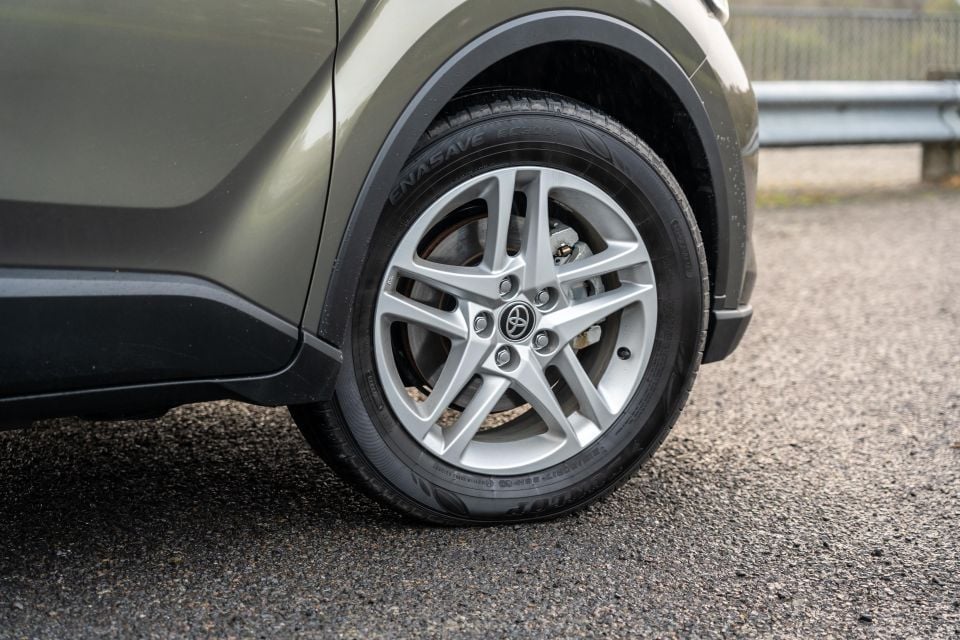
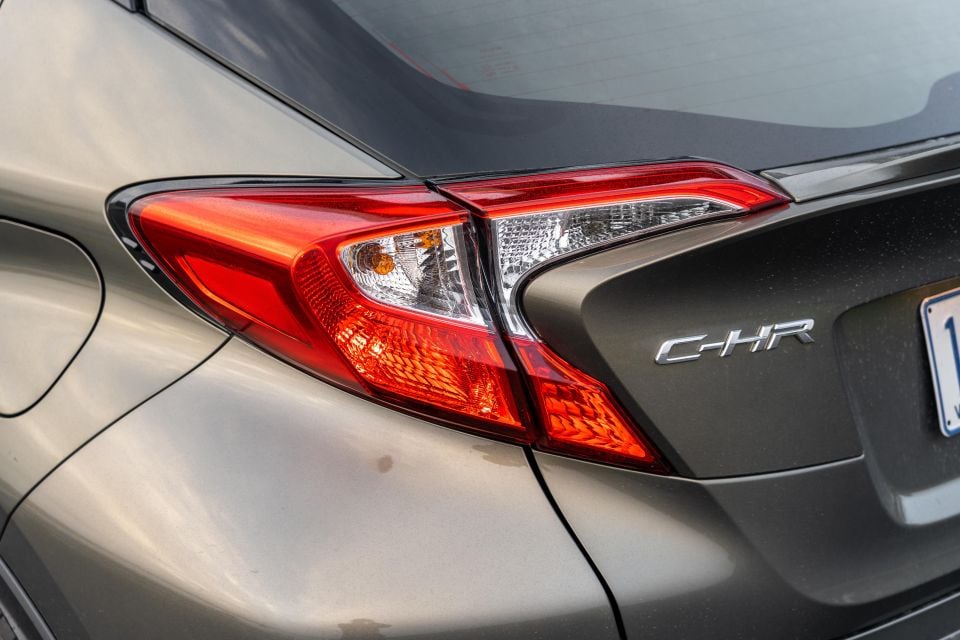
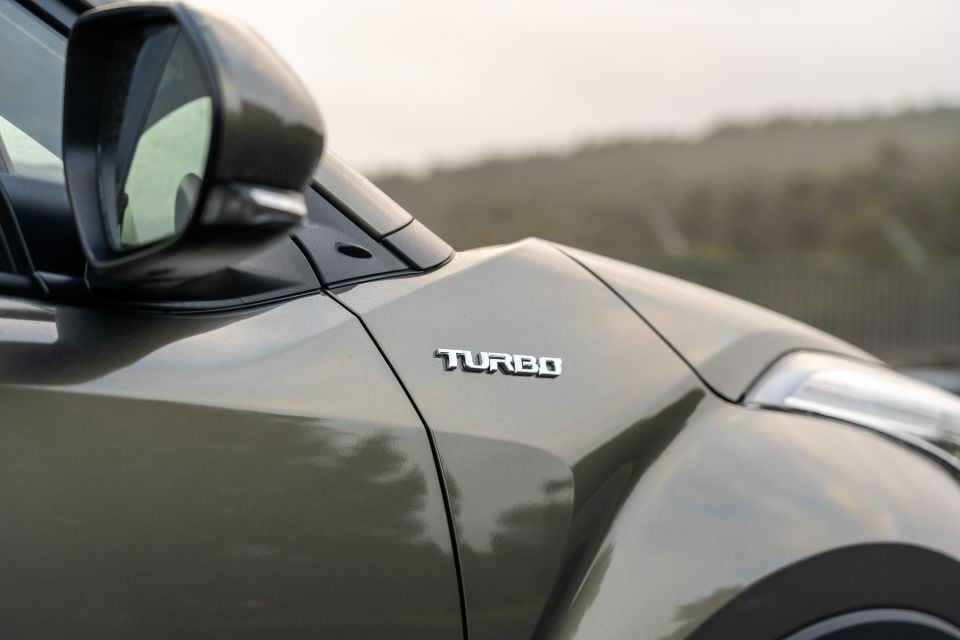
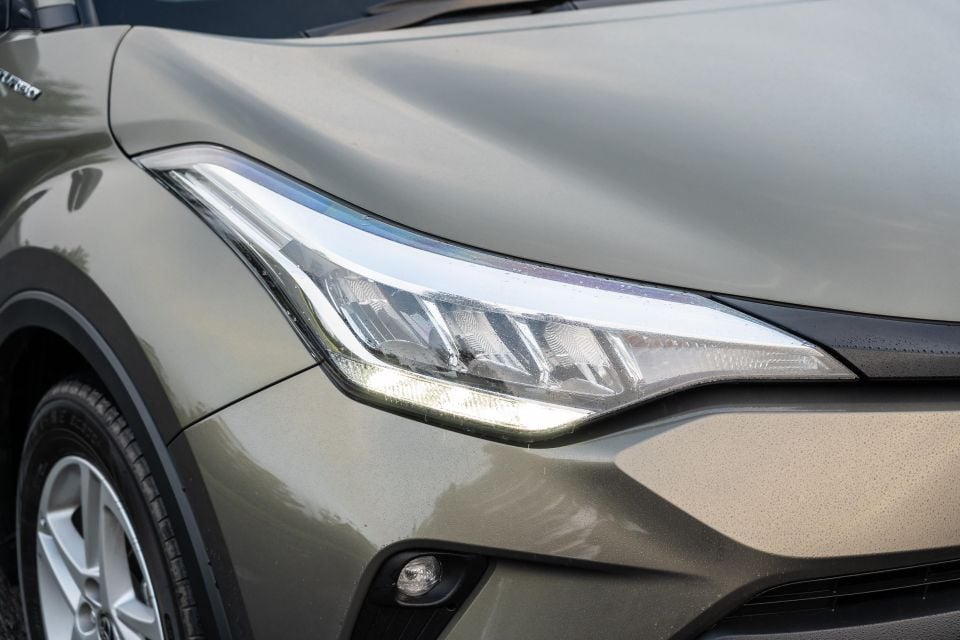
Infotainment comes in the form of an 8.0-inch screen with inbuilt satellite navigation, with USB connectivity and wired smartphone mirroring.
The Toyota C-HR was first tested by ANCAP in 2017 and achieved a five-star safety rating.
It scored an 87 per cent adult occupant rating, 77 per cent child occupant protection rating, 65 per cent pedestrian protection rating and finally a 68 per cent safety assist rating.

There’s a high level of standard safety equipment including autonomous emergency braking with pedestrian detection, lane departure assistant, blind spot monitoring and rear cross-traffic alert.
The cabin is basic but nicely presented. Toyota has gone to a great deal of effort to ensure all touch points are soft, with the use of piano black finish around the infotainment system and dashboard fascia.
Cloth seats may sound low rent, but they’re finished with a pattern that gives an edgy look and makes you feel less like you’ve bought the entry-level model. It’s one of the few passenger cars left on the market with a manual key that needs to be inserted and turned, in a world where most cars come with proximity entry and start.
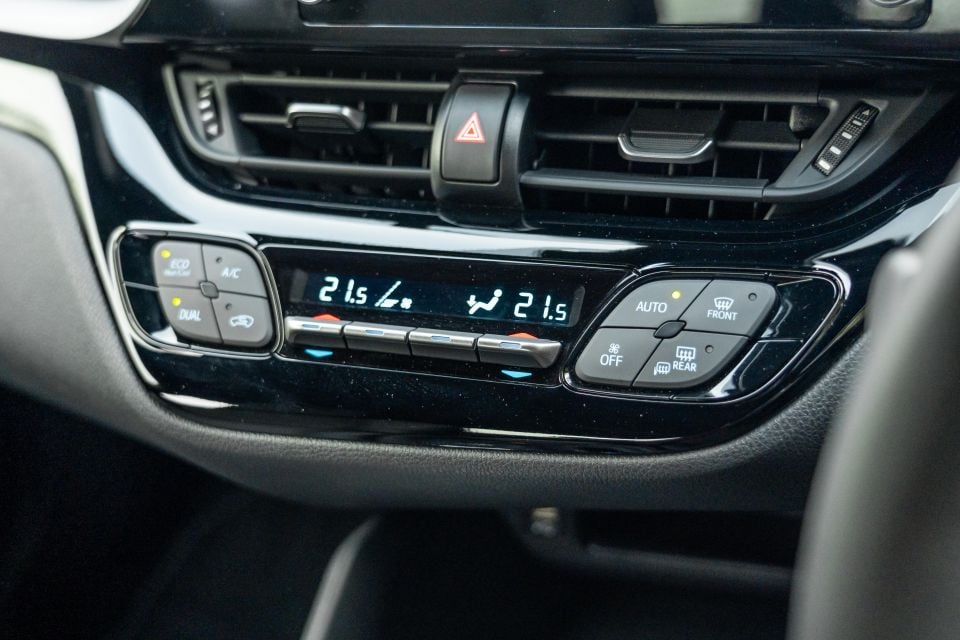
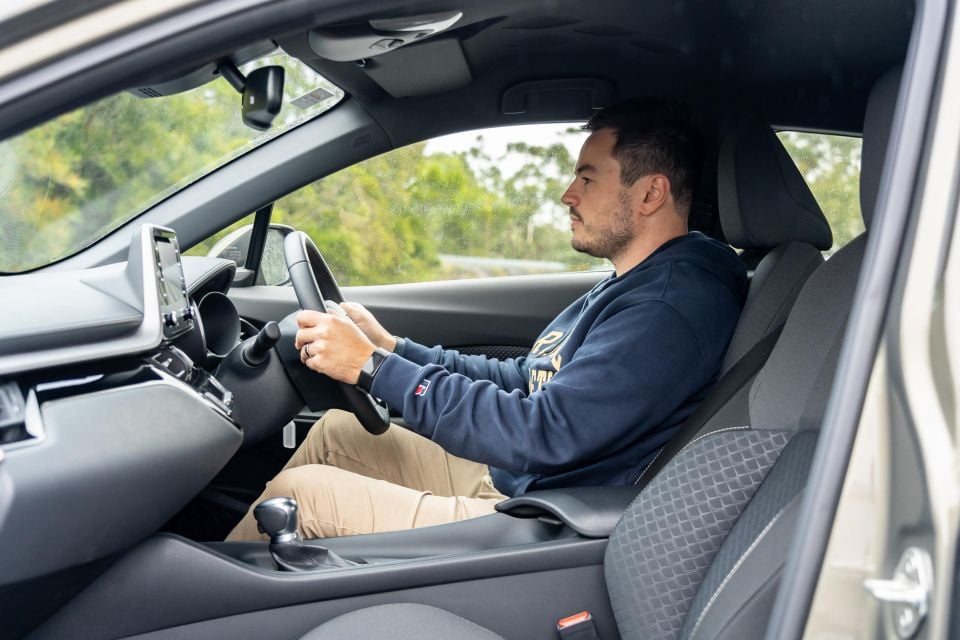

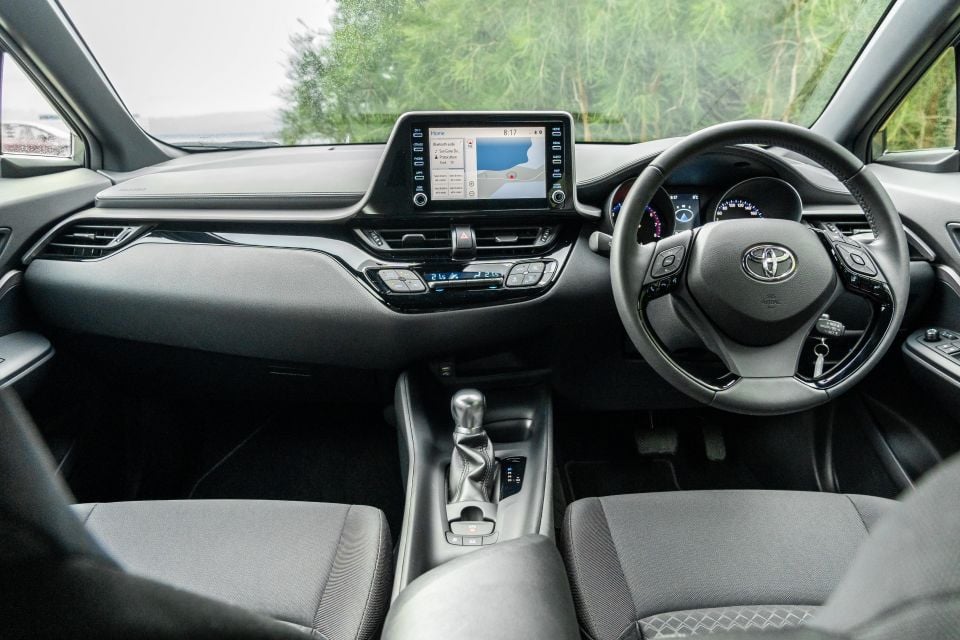
Outside of that, everything looks good and is nicely presented, with critical controls condensed into a cluster beneath the screen. The 8.0-inch infotainment system is easy to use and fairly fast. Apple CarPlay and Android Auto work well, but requires a cable with no wireless integration available.
Ahead of the driver is a 4.2-inch display offering a compass and trip computer details, flanked either side by a tachometer and analogue speedometer. Storage up front is good with a reasonably-sized centre console, storage in the door bins, and a smallish glove box.
The second row is a pretty cramped affair with poor accommodation for adults. On top of that, it feels quite closed in with the pillars offering limited natural light from the outside. There’s also no USB charging, no air vents, and no centre arm rest, so it’s a pretty basic place to be. On the two outboard seats you’ll find ISOFIX anchorage points.
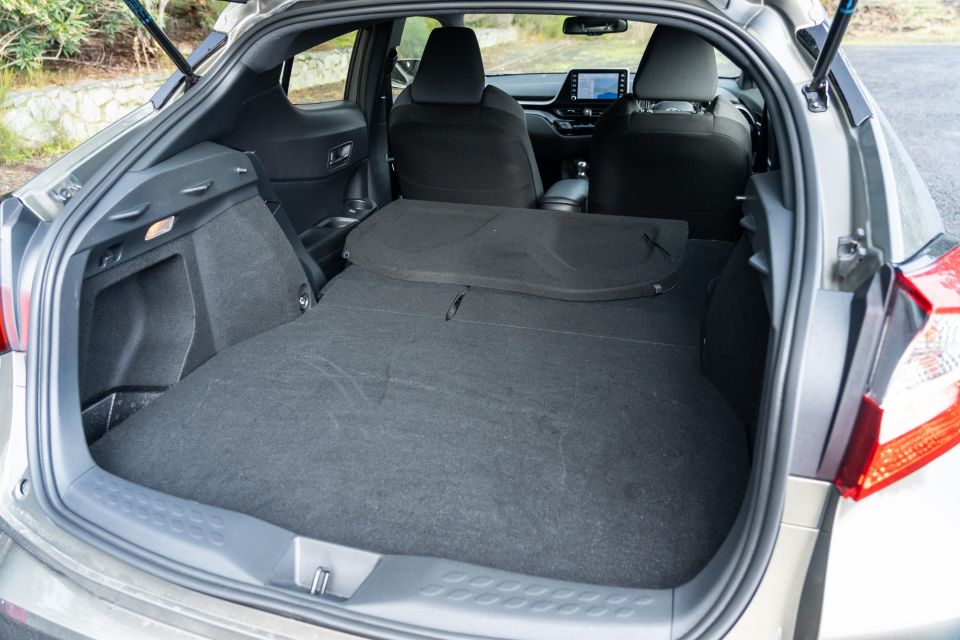



In the boot you’ll find 377 litres of cargo space with a space saver spare tyre located beneath the cargo floor.
Powering the Toyota C-HR is a 1.2-litre four-cylinder turbocharged petrol engine producing 85kW of power 185Nm of torque.
It’s mated to a continuously variable transmission (CVT) which essentially offers an infinite amount of gear ratios, although the driver is able to move through seven preset ratios using the manual mode.
On the combined cycle the C-HR consumes 6.4 litres of fuel per 100km, which is partly thanks to the technology featured in this engine.
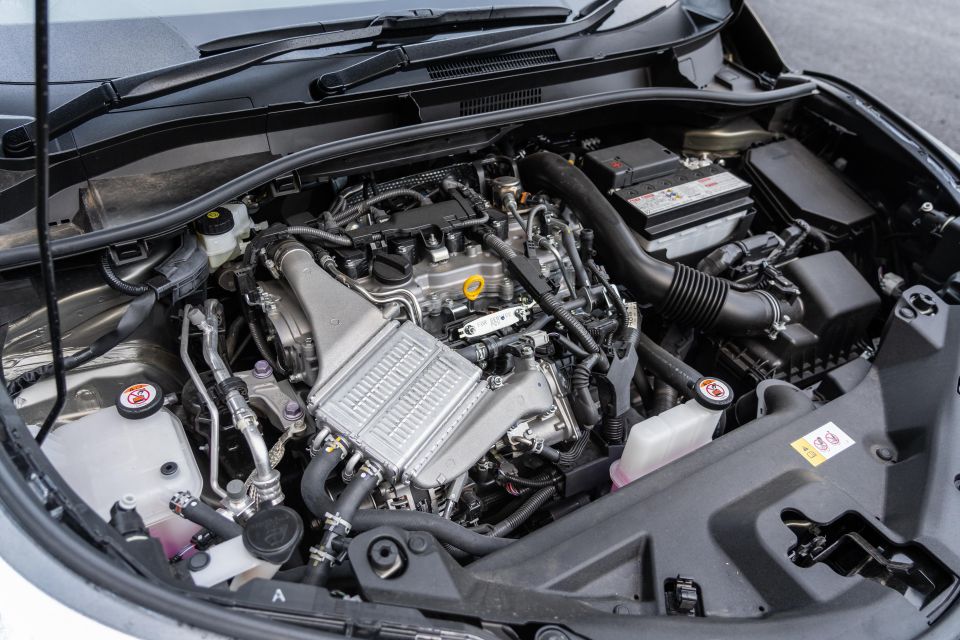
It uses direct injection, expanded variable valve timing, and water-cooled turbines – and at low engine loads is able to switch between the conventional Otto cycle and a more efficient Atkinson cycle. This characteristic gives it the ability to save fuel under the Atkinson cycle, before utilising extra torque from the turbocharger at higher engine speeds with the Otto cycle.
The only downside is that it requires 95RON premium unleaded petrol, which will cost you more in the long run.
Toyota has absolutely nailed the ride portion of the platform underpinning the C-HR. Toyota New Global Architecture (TNGA) is the platform that sits at the heart of most of its new line-up.
The C-HR sits on a version of the platform shared with the Prius, which is partly the reason a hybrid drivetrain can be so neatly packaged into some variants.
Outside of that, the C-HR rides beautifully over corrugations and rutted roads, rarely fussed by speed humps and cobble stones in the city.

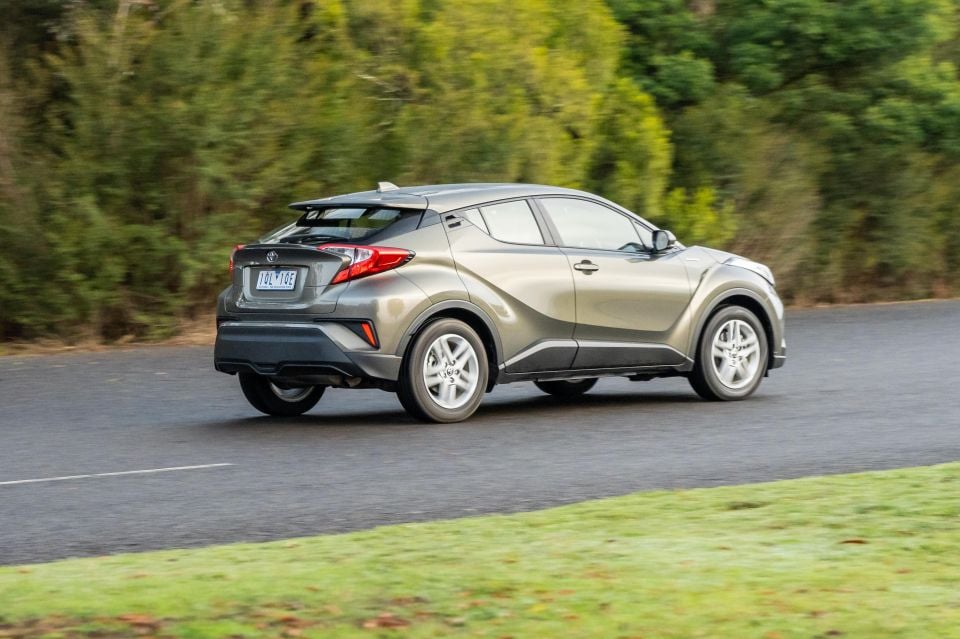
Head to the country and it’s just as happy on the open road, although it can get a little noisy in the cabin thanks to tyre roar. It’s not terrible, but it becomes noticeable on coarse chip roads at highway speeds.
The engine specifications may look a little weedy, but the 1.2-litre engine is fun to drive and leaves you with a smile on your face. It’s not incredibly quick, but it offers enough punch to keep up with traffic.
The CVT does a good job of keeping the engine in its torque band, but the downside is that it can sound thrashy inside the cabin if you sink the boot into it, with the engine flaring up immediately to sit within its peak torque band.
In the city there’s enough punch to keep up with traffic and visibility out the front and sides is good. But you’ll notice a blind spot about the C-pillar, and seeing out the rear is tricky at times thanks to the narrow rear window envelope.
Steering feel is good, as is brake pedal feel. If you do decide to have a go at a few corners, the C-HR is surprisingly sporty. The fairly minimal ground clearance means it has a low centre of gravity and feels agile when met with corners.
We’d actually love to see a sportier version of the C-HR with the engine out of the new GR Yaris.
The C-HR comes with a five-year, unlimited-kilometre warranty and capped price servicing.
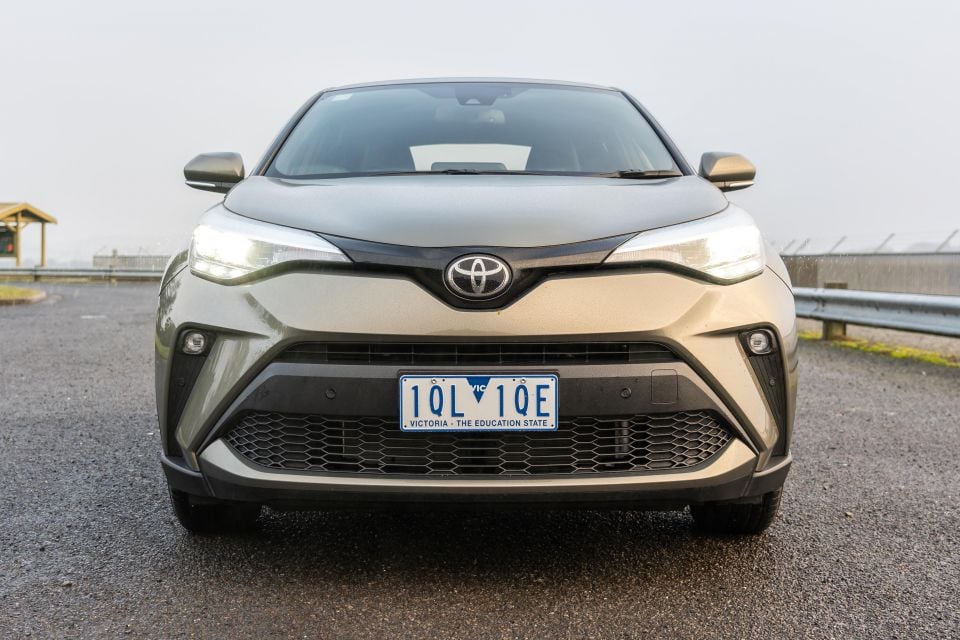
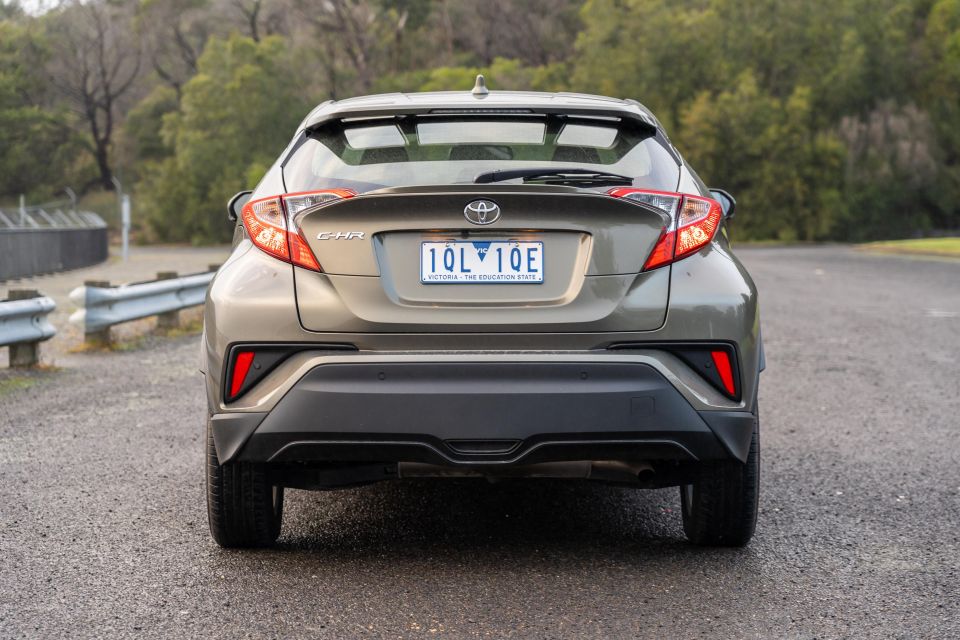
Servicing occurs every 12 months or 15,000km and costs $200 per service, with a service cost over five years of $1000.
In comparison to its peers, it’s incredibly cheap to service. Toyota is slowly moving away from six-monthly service intervals, which means you spend less time with your car at the dealership.
This small SUV craze has really taken off in Australia. It’s the type of vehicle that offers older drivers a higher hip point and an easier vantage point for parking and navigating the city.
The engine is fun, but could do with a bit more punch. It’s most bearable in this front-wheel drive form, with the all-wheel drive version adding unnecessary weight to the package.

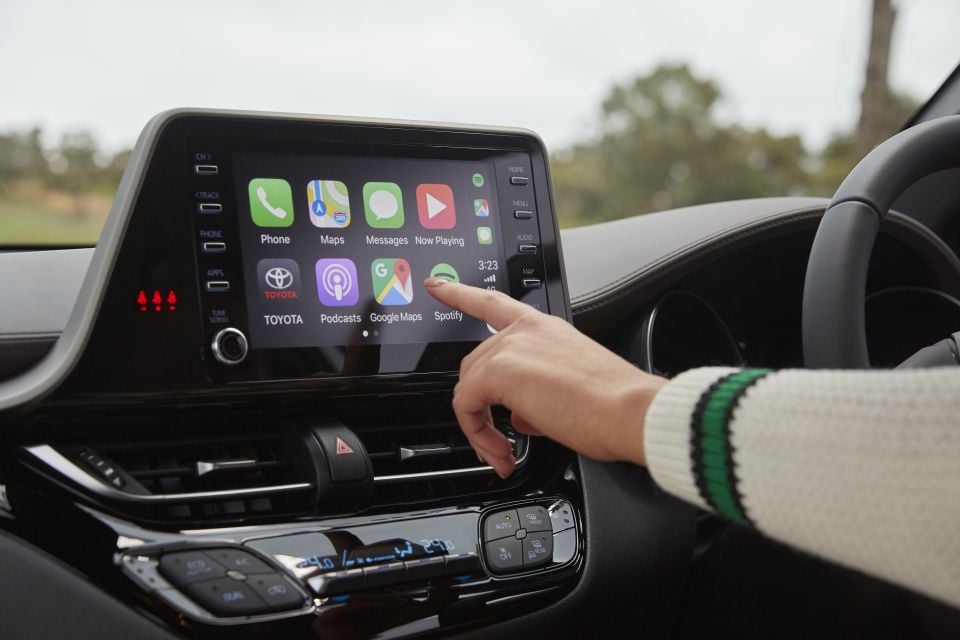
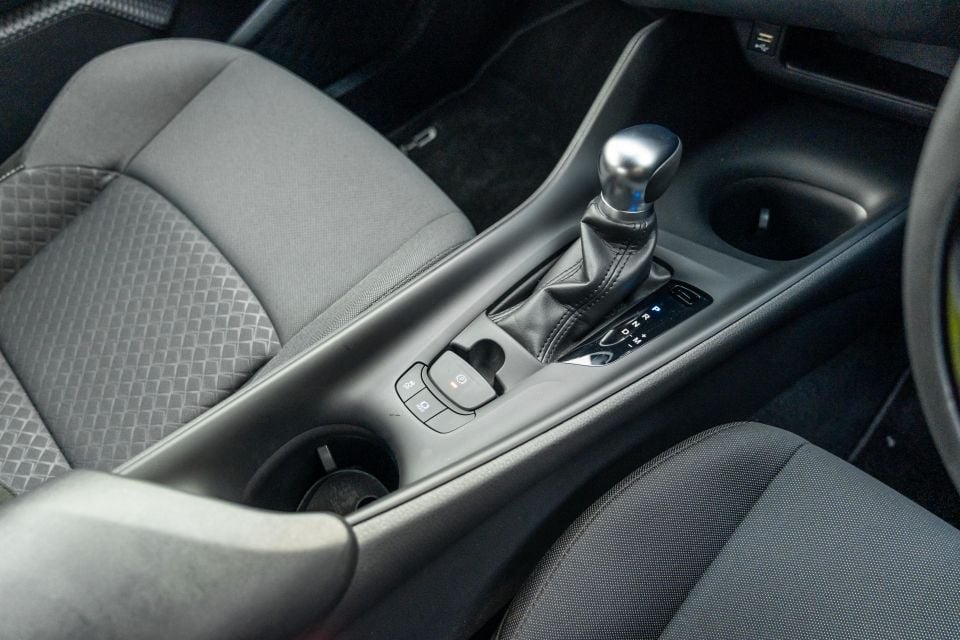
With excellent ride quality and enough features to keep most people happy, it presents an excellent alternative to vehicles like the Mazda CX-3 and Hyundai Kona.
If you feel like treating yourself, the top-specification Koba front-wheel drive is well worth the $4400 additional investment – the added bells and whistles will keep you busy and will ensure you don’t have to ever use a flip-out key again.
Where expert car reviews meet expert car buying – CarExpert gives you trusted advice, personalised service and real savings on your next new car.
Paul Maric is a CarExpert co-founder and YouTube host, combining engineering expertise with two decades in automotive journalism.


Damion Smy
19 Hours Ago


CarExpert.com.au
5 Days Ago


Damion Smy
5 Days Ago


Damion Smy
6 Days Ago


Josh Nevett
6 Days Ago


Max Davies
6 Days Ago